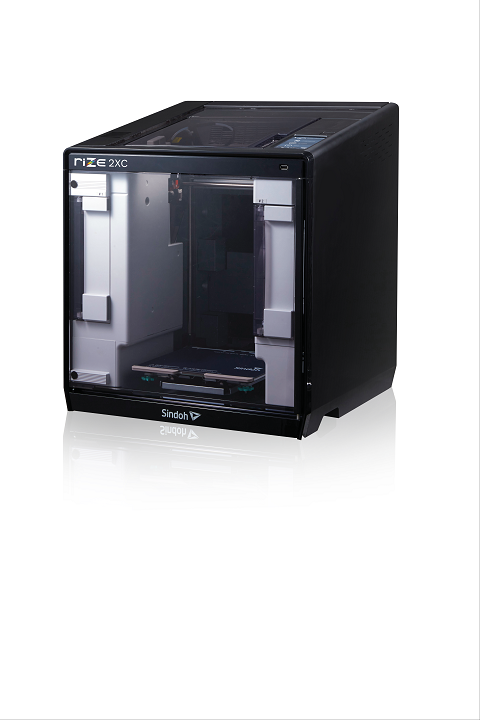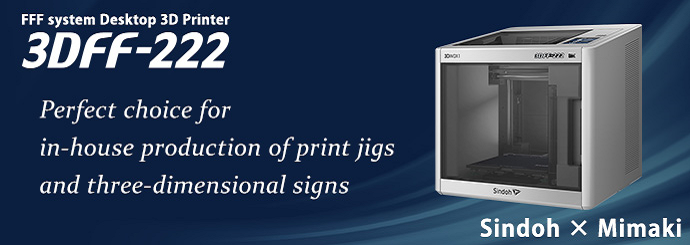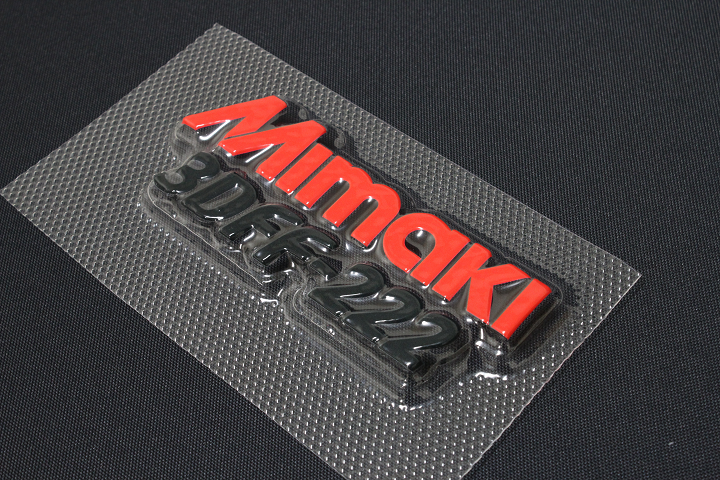RIZE Introduces Adaptive 2XC Desktop 3D Printer for Offices, Schools, and Homes
In 2016, Massachusetts-based 3D printing company RIZE Inc. released its first industrial-grade desktop 3D printer, the Rize One, renowned for its safety, low emissions, and elimination of post-processing. Then, in 2018, the company introduced the first industrial desktop AM solution for manufacturing full-color functional parts, the XRIZE system, which I was lucky enough to test out at RAPID 2019. Today, it’s announcing a new kind of desktop 3D printer, the professional RIZE 2XC, an adaptive system that was developed collaboratively with South Korean 3D printer manufacturer Sindoh.
 I spoke with RIZE CEO Andy Kalambi ahead of the release, who told me that even during the ongoing COVID-19 pandemic, the company has been “very productive.”
I spoke with RIZE CEO Andy Kalambi ahead of the release, who told me that even during the ongoing COVID-19 pandemic, the company has been “very productive.”
“It’s been an interesting time, but rewarding,” Kalambi said.
He said that the RIZE team speaks every morning during a check-in meeting, to make sure everyone is doing okay and see if anyone needs help with a project. Even during lockdowns across the US, the company has been busy, 3D printing personalized face shields that were distributed to hundreds of essential and healthcare works in the Boston area and working on the new 2XC.
“Entirely during COVID times, we developed this new printer with Sindoh,” he told me.
The RIZE 2XC was engineered from home offices, and, according to a RIZE press release, is a testament “to the safety principles embodied in RIZE’s solutions – principles that are especially relevant today as organizations reinvent workflows for a return to office locations.” The business supply chain needs to be even more flexible now due to COVID, and RIZE says its new printer can help. The 2XC can be used at home – no need to worry about germs spreading from lack of social distancing – and in offices and classrooms, with no fear of releasing harmful airborne volatile organic compounds (VOCs).
“The newer, higher performance, safe materials from next-gen FFF players such as RIZE are helping to drive a transformation in the 3D printing sector that are particularly relevant now as the world emerges from a pandemic. The durability and safety advantage that’s possible from next-generation 3D printing systems merits the attention of any engineering or design team that wants to give their users the best, and safest, tools,” Tim Greene, research director, 3D printing, for IDC said in the release.
The adaptive printer is the first deliverable to come from the RIZIUM Alliance, which is a new collaboration between RIZE and industry partners, like Sindoh, to drive safer, more sustainable 3D printing. The RIZE 2XC was made with a redesigned Sindoh dual-extrusion 3D printer, which can run engineering-grade RIZIUM materials that are moisture-resistant, recyclable, and zero emission.
 RIZIUM One material
RIZIUM One material“We based our material on safety – it’s engineered for safety, durability, and strength,” Kalambi told me. “They’re medical grade, and especially in today’s context, things like sanitizing and being able to wash it with alcohol or acetone is important. Materials science is our differentiating factor.”
Kalambi told me that the ‘C’ in the company’s new 2XC printer stands for ‘composite,’ since RIZE takes a “material-led approach.”
“What we have done now is taken our material portfolio and partnered with industrial players, so we can offer it to a broader market of users.”
Sindoh is applying the innovative RIZIUM materials, engineered for user health, so that customers in various sectors on its platform can use a safe, sustainable material at a lower price.
“With Sindoh, we’re working with the same materials,” Kalambi explained. “We have done lots of engineering efforts with them to get the printer ready for our materials, worked on nozzles and the drive train and the slicer, all of that, and made the printer far more robust. It’s a printer that is a joint product. It’s a new hybrid platform, releasing a set of products with Sindoh that’s based on our polymers and materials science.”
The two independent extruders on the RIZE 2XC are designed for composite filaments and hardened materials. One extruder runs RIZIUM polymers and composites, which can be washed with just soap and water, while the other runs the unique RIZIUM Support, created by RIZE specifically for filament-based extrusion 3D printers. All in all, RIZE says that its new printer offers a safe way to fabricate durable, strong, functional components, without any unnecessary post-processing.
“The RIZE 2XC is especially well-suited for a variety of Industrial and Academic applications,” Ricco Busk, Director at RIZE partner CADSYS, stated. “Given the high demand for having 3D Composite Parts, we are able to, almost immediately, sign up a customer for the RIZE 2XC to use in their innovative plastic molding applications, such as robotic grippers. Combining RIZE’s material advantage in the high quality, easy to use 2XC 3D platform opens doors to new markets for 3D printing that need precision parts made safely and sustainably.”
Kalambi told me that the RIZE 2XC has plenty of great features, such as a heated build plate, a camera for monitoring prints, and automatic bed leveling. Because the company’s Augmented Polymer Deposition (APD) platform has not been added, the system does not print in color, but he said that it does have “a much bigger build volume” in comparison to other desktop printers.
“It’s great for home and office use, as those industries wanted a good printer within a certain price point,” Kalambi explained. “Lots of 3D printing is being done in schools and offices, which is why we partnered with Sindoh…they have lots of knowledge in the education field. That industry had a requirement for a low-cost printer, and RIZE wanted to be able to offer a more affordable option.”
Kalambi also said that the RIZE 2XC is great for 3D printing industrial parts.
According to the RIZE release, this new printer is the first that has brought “safe, sustainable 3D printing” to the industry’s compact sub-$5k market, which can help organizations struggling to get back on their feet in a post-pandemic world get a leg up over the competition.
“Sindoh’s cooperative R&D effort with RIZE showed us that we chose the right partner indeed – a partner as committed to innovation in materials and technologies as we are. We’re delighted to expand our reach into more segments of the market through the cooperative solutions we are creating with RIZE,” said BB Lee, CEO, 3D Printing Division at Sindoh Co., Ltd.
The RIZE 2XC will be available from RIZE’s network of channel partners starting June 30th, for an introductory price of $3,995 in the US market and €3,995 in Europe. In the meantime, I’ll be keeping my ear to the ground, because Kalambi said RIZE will have some more exciting news to share with us in mid-July.
The post RIZE Introduces Adaptive 2XC Desktop 3D Printer for Offices, Schools, and Homes appeared first on 3DPrint.com | The Voice of 3D Printing / Additive Manufacturing.
Materialise drives serial additive manufacturing with Magic 24 and new Build Processors
Interview with 3DGuru’s Inbo Song on 3D Printing in Korea
We’re all familiar with Terry Wohlers and his eponymous report. What you may not know is that there is also a Korean Terry, Inbo Song. He provides companies with research, analysis, training and consulting in 3D Printing. With deep experience in the Korean market he is guiding companies there towards 3D printing through the highest quality information that he can provide. He’s also the perfect person to guide us into 3D printing trends in Korea and beyond.
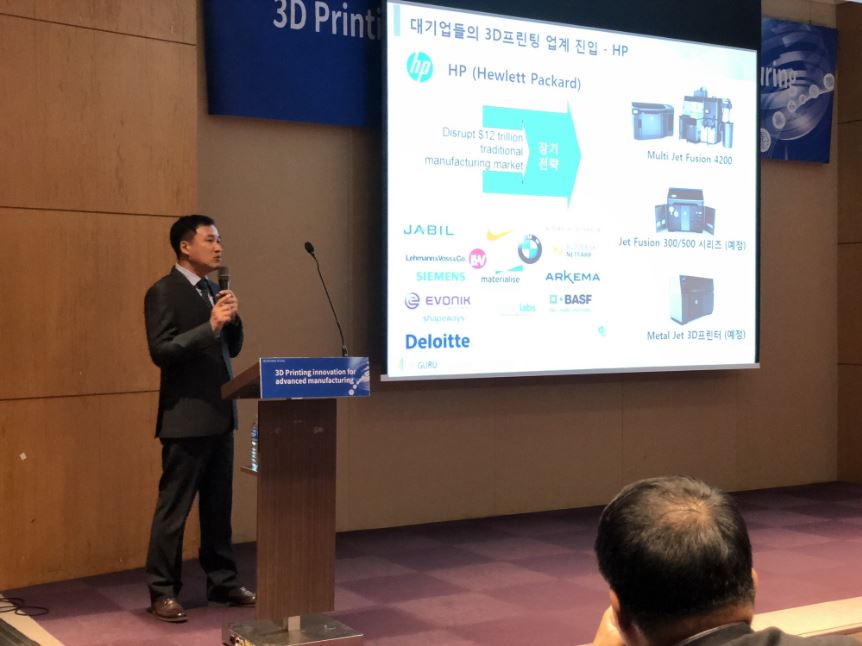
What does 3DGURU do?
3DGURU provides 3D printing manufacturers, resellers and end users in South Korea with not only up-to-date information and news of, but also deep insights into, the industry including technology, trends and exhibitions through the website. It also sells select 3D printers and related services including lectures, consulting and training. 3DGURU plans to find and add various contents and profit models to meet the domestic needs. 3D printer industry stakeholders and users in Korea appreciate the insights and expertise of 3DGURU.
Why should I choose to work with your company?
3DGURU is known for a useful source where numerous Korean professionals turn to seeking the latest information on the 3D printing industry. Mainly targeting Korean market, it has been trying to reach to the representatives from various domestic and international businesses or organizations, including manufacturers, resellers, consultants, investors, government institutions and end users. Despite its aiming at the national users, 3DGURU is open to information exchange and collaboration with any 3D printing company abroad which is interested in the Korean market.
What is the 3D printing market in Korea like?
According to the 2018 3D Printing Industry Survey conducted by the Korean National IT Industry Promotion Agency(NIPA), the Korean 3D printing market of the year was about $340M, 16.3% increase from the previous year. It is expected to grow to aboout $870M by 2023, with annual CAGR of 21.5%.
As software coding education became mandatory in 2018, the demand for entry-level 3D printer has increased by 37.2%. Unlike the global trend, products (hardware, material, software) account for 80% of revenue and services for 20%. In 2018, there were 351 3D printing companies, up by 16.2% from the previous year. The fact that 235 (67%) amongst them were start-ups that had been established within last 9 years shows the rapid growth of the industry in Korea.
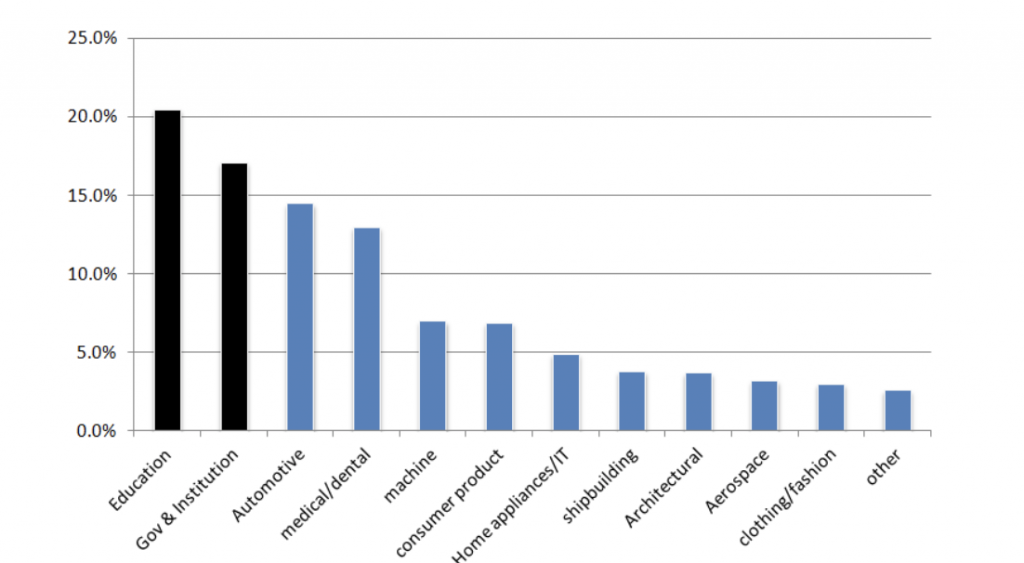
The education industry used 3D printers most by comparison with other industries, followed by 17.1% of government and institution, 14.5% of automobile, 13% of medical / dental. It is worthy of notice that education and government & institutional sectors accounted for 37.6% of the market, which was significantly higher than the global average, 10 to 15%.
Meanwhile, along with the Korean major manufacturers such as Samsung Electronics, LG Electronics, and Hyundai Motors, many medium and small-sized manufacturers are using 3D printers for prototyping to shorten product production cycles. Still, given the general use of 3D printers and high interest in it, large manufacturing companies tend to be rather conservative in adopting them for production.
As for the bio 3D printing, research institutes and large hospitals are carrying out a variety of experiments and the National Health Insurance Corporation is putting an effort to improve its system so that the market could be expanded.
The 3D printing market in Korea is expected to grow continuously with all the inputs from the business sector as well as government.
Are Korean companies going to expand outside of Korea?
Yes. There are some Korean manufacturers playing the role. Examples include Insstek, a manufacturer of DED process metal 3D printer, which has exported the products to the EU countries and Russia; and Sindoh, another manufacturer, which has sold their goods in U.S. in partnership with Mimaki USA and Stanley Black & Decker. Carima, Hebsiba, and several other companies also have exported 3D printers, mainly to European countries, which account for 22.3%, 4.4% to Southeast Asia, 2.6% to US and 1.8% to Japan.
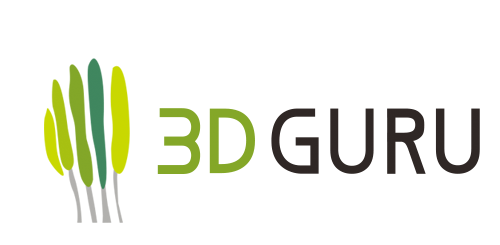
What is holding back the adoption of 3D printing?
The companies which already have adopted 3D printers say that slow output speed (50%), output size limit (42.7%), low output quality (41.8%), lack of proper post maintenance (33%), lack of diversity of material (31.8%) and insufficient labor supply (22.7%) are the biggest difficulties. Unreliability of 3D printers is also considered as an obstacle. Examples include printing failures and printed objects that are not exactly same as the original designs.
Besides these technical issues, conservative corporate culture of Korean companies might be said to get in the way of expansive adoption of 3D printing.
What kind of companies buy 3D printers in Korea?
Mainly manufacturers, schools, universities and research institutes purchase 3D printers.
What kind of parts are they printing?
It depends on companes and industries. A survey conducted in 2018 reported that 28.1% were for prototype production, 21% for educational research, 20.7% for demonstration models or designs, 8.4% for customized products, 8.1% for tools and accessories. Personally, I see many cases in which prototypes, custom products, and educational applications are printed.
Are companies doing production with 3D printing?
Surveys show that only 4.1% of the entire 3D printer usage is for mass production of finished products. Not all industries are same, but generally speaking, many companies are afraid of jumping in and using 3D printing for production. The representatives of several large Korean manufacturers I’ve talked to in person seem to think that it would be premature to make final products with 3D printers. Still, their continuous interest in 3D printing technology is undeniable.
Although I have seen some small companies making final custom products using 3D printing, large manufacturers tend to be cautious about it.
Some giant manufacturers have been using 3D printers for prototypes, while, unlike the practices of the counterparts in Europe and North America, there seems to be few publized attempts to adopt 3D printers for production.
How is the 3D scanning market evolving?
In 2018, the sales of 3D scanners accounted for 7.7% of total sales of 3D printing related products—3D printers, 3D software, 3D printer materials, and 3D scanners. Meanwhile, most of them, as high as 94.7%, were foreign-made.
In fact, Korean companies are using 3D scanners more and more.
While fixed type 3D scanners with high accuracy and high resolution have been popular, now consumers start to seek for the best options to their own needs. This trend of diversification and segmentation of 3D scanners can be also said to be of the world.
However, as more companies start to use 3D scanners to shorten measurement processes and product production cycles, and accordingly, the demand for affordable goods with proper specifications increases, various types and forms of products are being developed. These are used in various industrial fields, especially in the automobile industry.
Furthermore, 3D scanners are getting to be used as input tools for producing videos, such as movies, games, and VRs beyond the conventional usage for reverse engineering and quality inspection.
All in all, 3D scanning market in Korea is in early stage where analog information is being digitized.
The post Interview with 3DGuru’s Inbo Song on 3D Printing in Korea appeared first on 3DPrint.com | The Voice of 3D Printing / Additive Manufacturing.
2019 Desktop FFF 3D printer of the Year: the Wildcard Update
Mimaki USA and Sindoh Introduce New 3DFF-222 Desktop 3D Printer
In 2015, Mimaki USA, an operating entity of Japanese company Mimaki Engineering, announced that it would begin development of its own full color 3D printer, which was then previewed two years later. The company installed its first photorealistic, UV-cure inkjet 3DUJ-553 3D printer in the Americas last winter at print technology company Pictographics in Las Vegas, and is now venturing into the world of desktop 3D printing with its latest product launch.
 Mimaki is one of the top manufacturers of wide-format inkjet printers and cutters, along with 3D modeling machines, software, hardware, and associated consumables, like cutting blades and ink. Now it’s adding the new 3DFF-222 desktop 3D printer to the mix, which is co-branded with South Korean 3D printer manufacturer Sindoh.
Mimaki is one of the top manufacturers of wide-format inkjet printers and cutters, along with 3D modeling machines, software, hardware, and associated consumables, like cutting blades and ink. Now it’s adding the new 3DFF-222 desktop 3D printer to the mix, which is co-branded with South Korean 3D printer manufacturer Sindoh.
“The new desktop 3D printer is designed to fit the needs of modern print production environments and it is suitable for a broad range of uses. This latest product introduction demonstrates Mimaki’s commitment to driving innovation and providing our customers with profit-enhancing solutions,” said Michael Maxwell, a senior manager at Mimaki USA.
The FFF 3D printing solution by Mimaki and Sindoh, which was developed to be used as an in-house design and production tool, obviously doesn’t have the more than 10 million color combinations offered by the full-color 3DUJ-553 printer, but it’s perfect for fabricating parts, like jigs, that are used in direct-to-object printing. The desktop 3DFF-222 can also be used to manufacture tools for producing 3D signage, as well as molds for vacuum forming.
The compact 3DFF-222 makes it possible for users to cut back on costs as they work to expand into more profitable markets, and was designed to reduce noise levels during operation, making it a good system for use in an office setting. The 3D printer’s fully covered design, which helps gets rid of any disruption of contaminants that might adhere to a model during 3D printing, and its installed HEPA filter also contribute to this.
The new desktop 3D printer by Mimaki USA and Sindoh, the latter of which also created a 3D printer in partnership with Stanley Black & Decker a few years ago, prints parts up to 8.27″ x 7.87″ x 7.67″ in easily loadable PLA filament cartridges, and also provides remote monitoring of each print through a built-in camera and included app.
“Flexibility and ease-of-use are key features of the new desktop 3D printer,” Maxwell stated. “This printer also complements our industrial printers seamlessly. The 3DFF-222 is capable of inexpensively producing customized print jigs, which can be used to stabilize print quality when printing on UV-LED flatbed printers from our UJF Series. Additionally, customers can create objects for decoration as well as a variety of signage.”
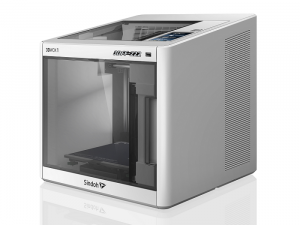 Additional features of the new desktop 3DFF-222 3D printer include a heated flexible bed, which has a built-in thermostatic function for easy model removal and stable formation during 3D printing, and semi-automatic leveling, which measures the table’s horizontal error and tells the color monitor how to maintain a level position.
Additional features of the new desktop 3DFF-222 3D printer include a heated flexible bed, which has a built-in thermostatic function for easy model removal and stable formation during 3D printing, and semi-automatic leveling, which measures the table’s horizontal error and tells the color monitor how to maintain a level position.
A 5″ full-color touch panel provides illustrated instructions to make the system easy to operate, and the filament is automatically loaded and supplied to the 0.4 mm 3D printer nozzle after installation, with no manual feeding required. The 3D printer weighs 16 kg and comes with a built-in LED lamp and dedicated 3DWOX Desktop slicing software.
The 3DFF-222, which is the latest addition to Mimaki’s 3D printer portfolio after its full-color 3DUJ-553, is now available for order.
Discuss this story and other 3D printing topics at 3DPrintBoard.com or share your thoughts in the Facebook comments below.
[Images: Mimaki]


